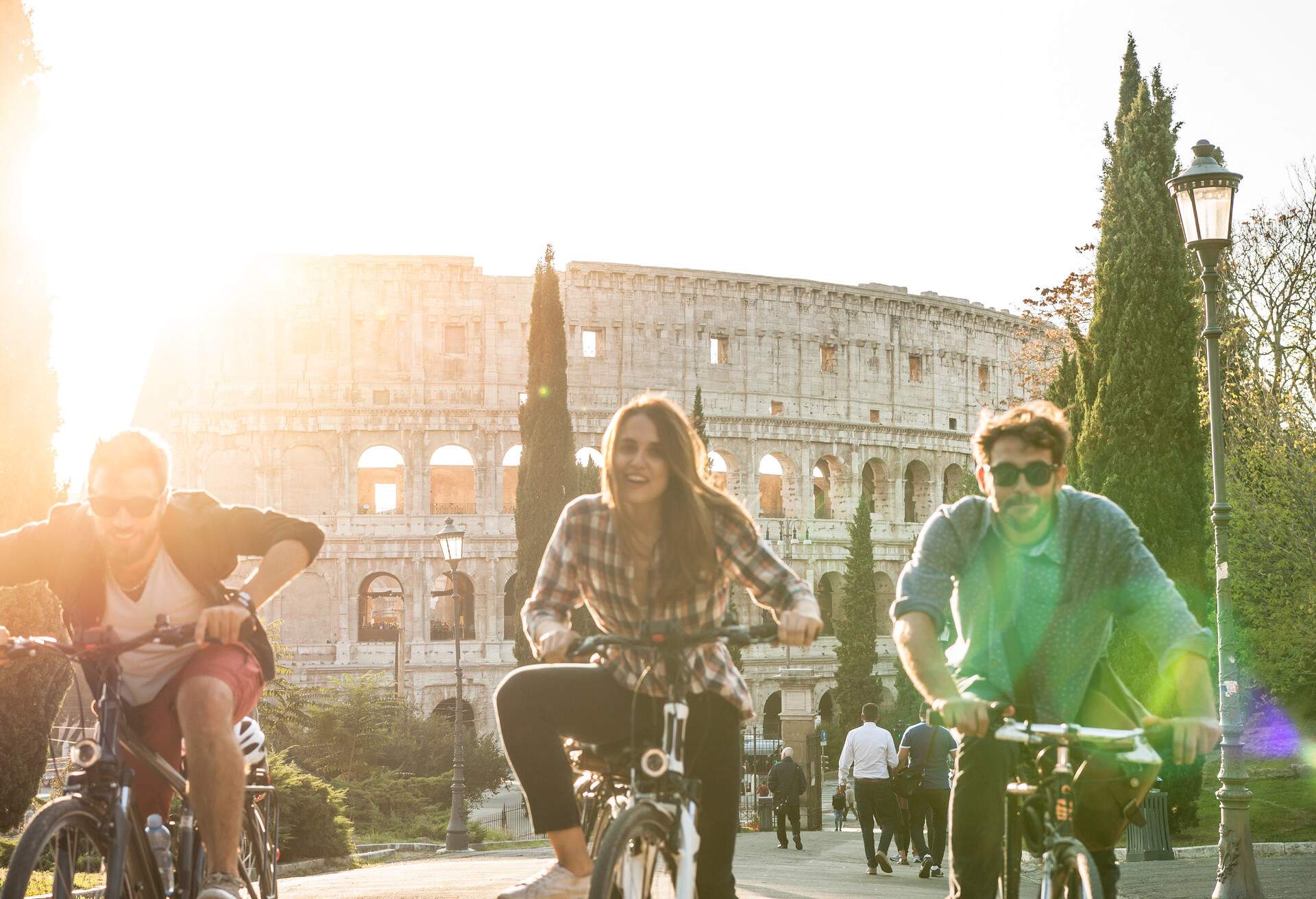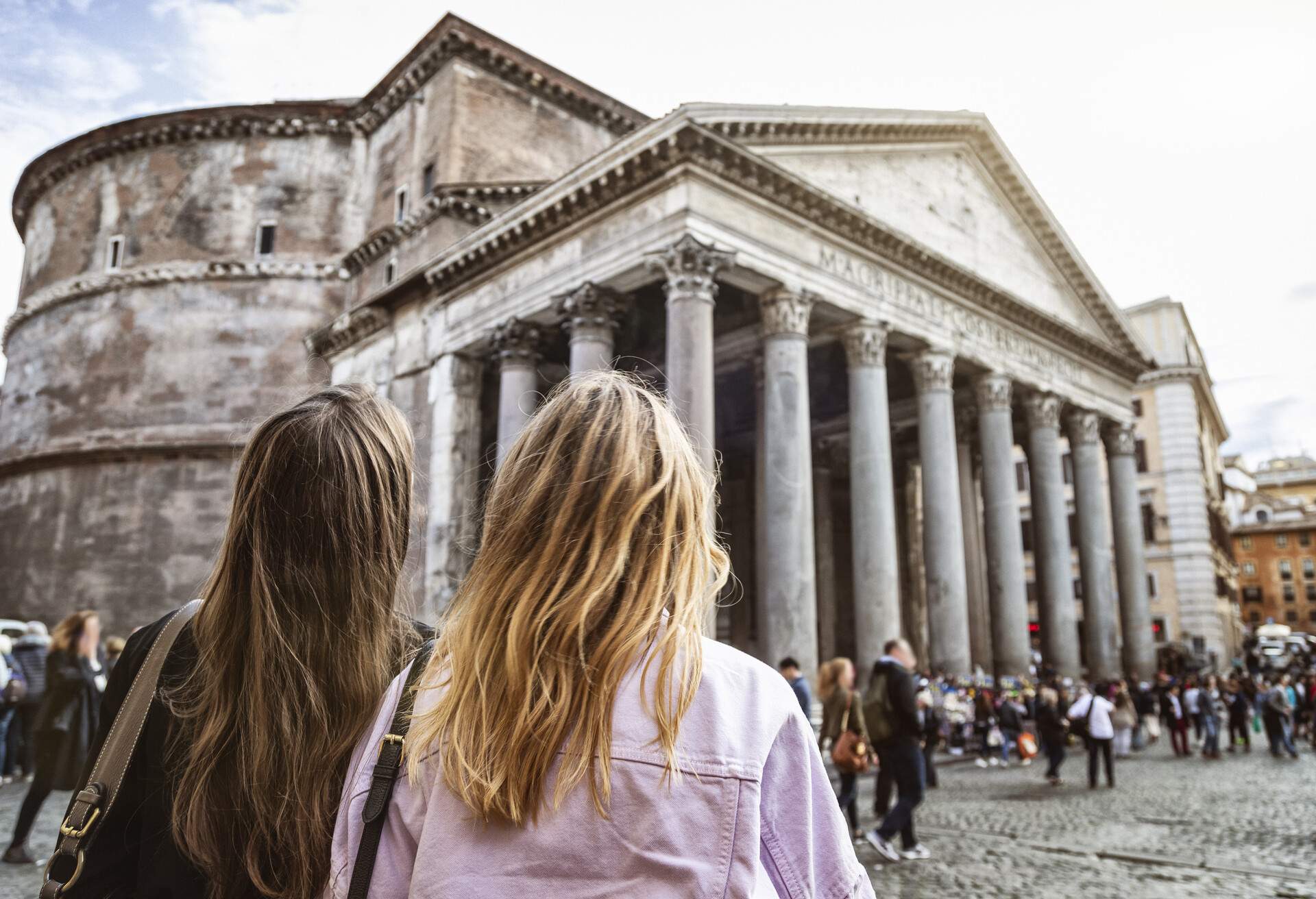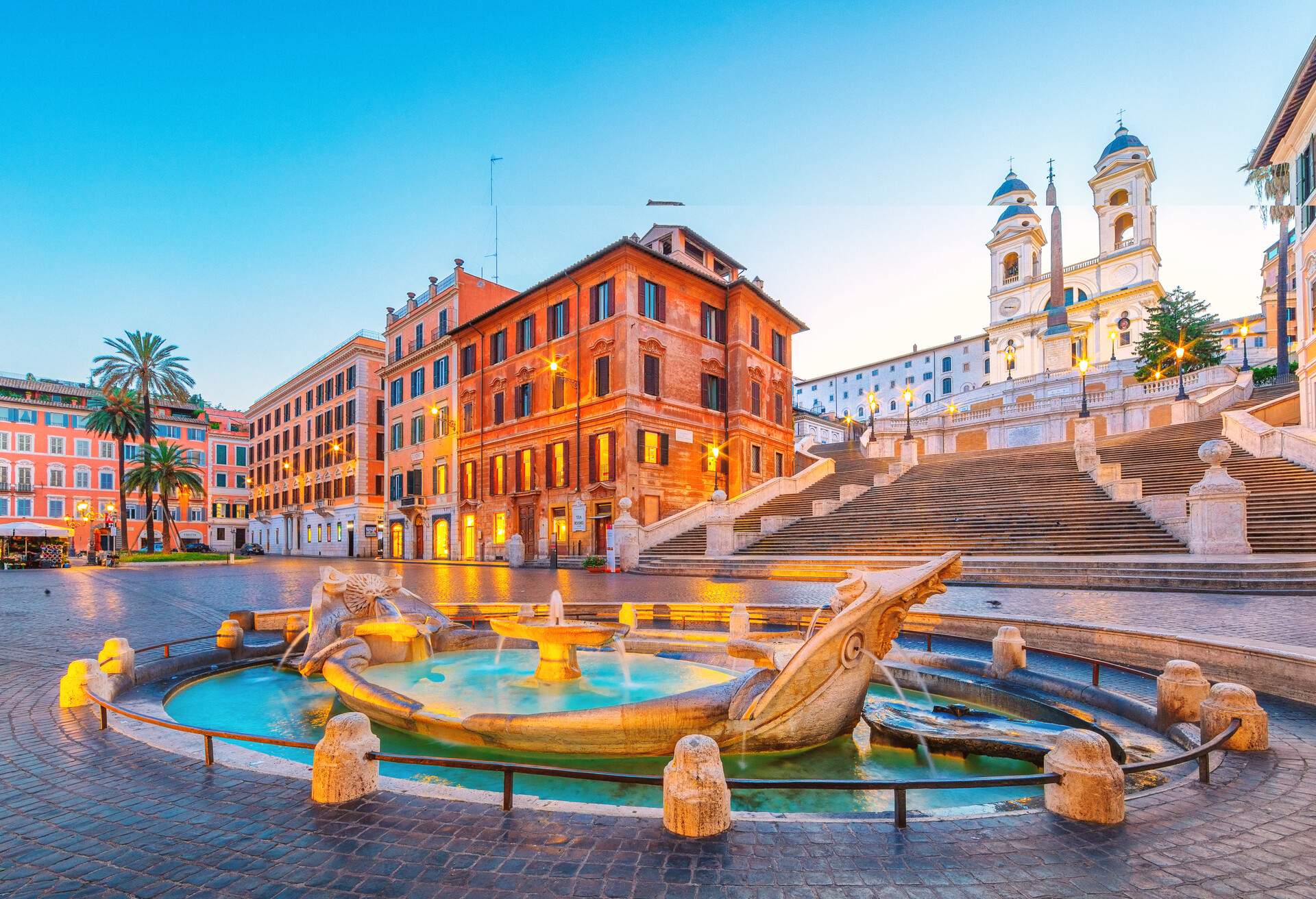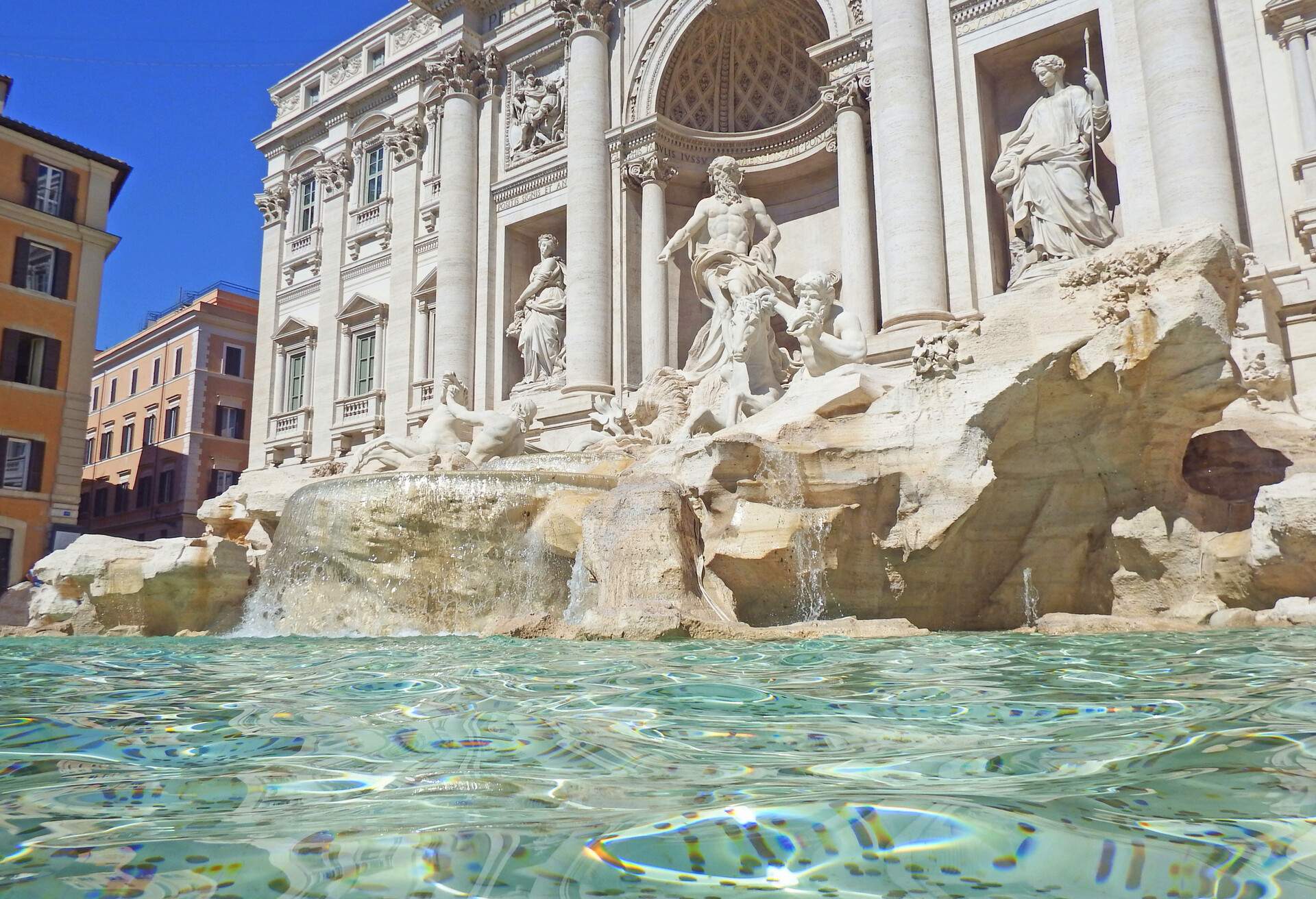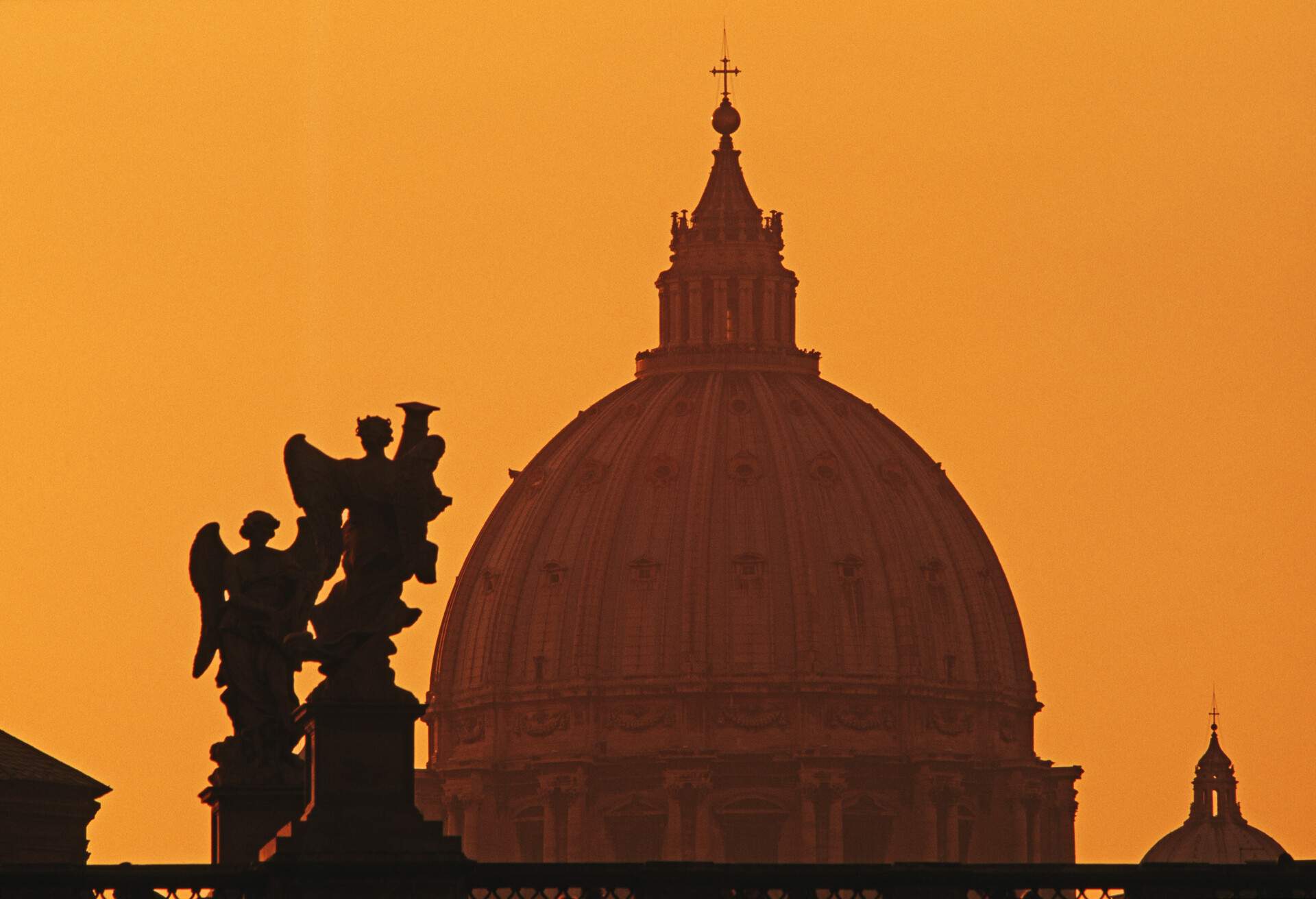The best time to visit Rome doesn’t have a universal answer; it will depend on your priorities, planned activities and, of course, your preferred climate. Different seasons have advantages and disadvantages based on their weather, how busy they are and what events run during the season. No matter what season you choose to visit, you’ll be able to visit the city’s most famous attractions and have an unforgettable experience.
The best time to visit Rome – autumn
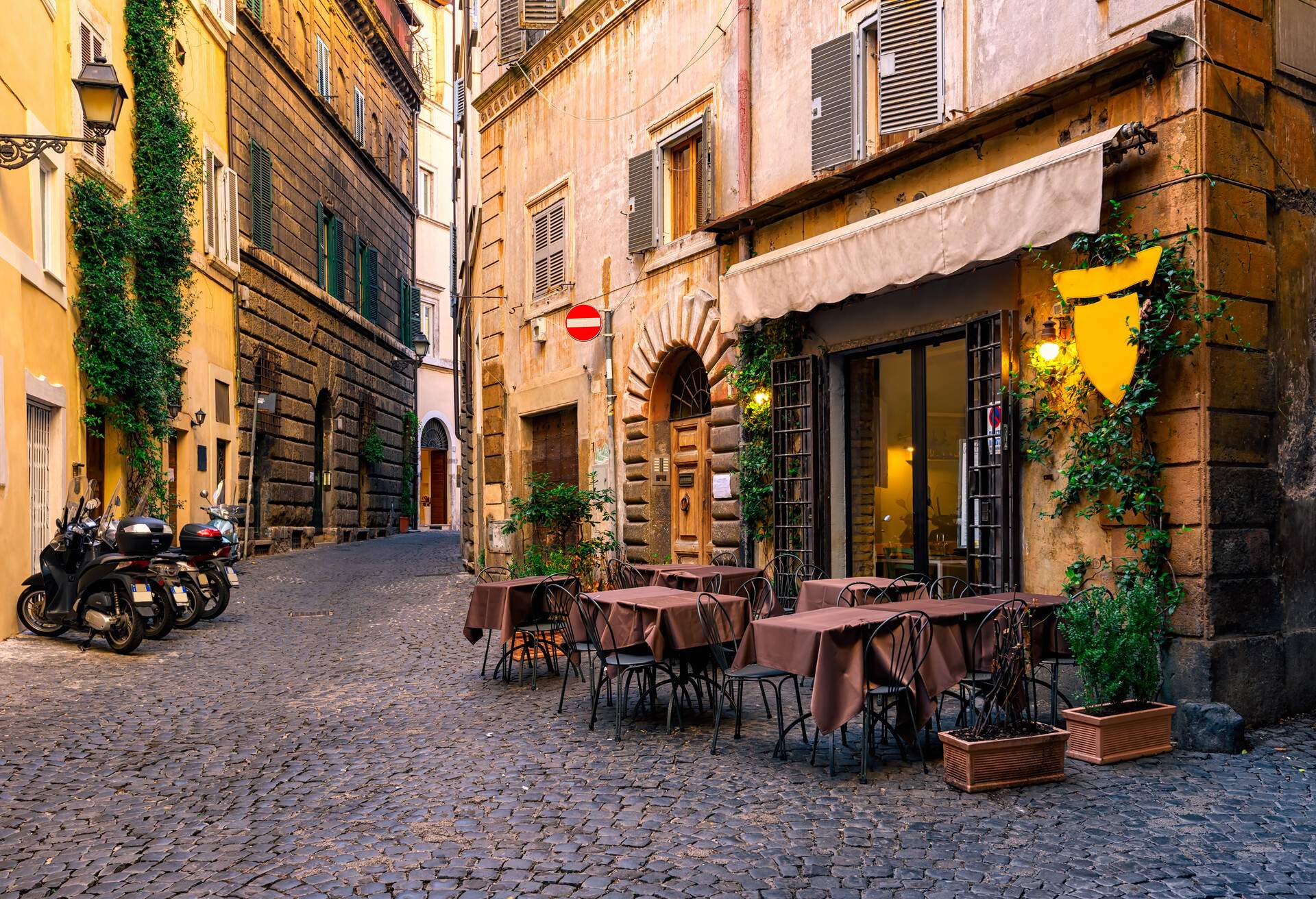
Autumn is a wonderful time to visit Rome. In the first half of the season, the weather is mild and the days are long; as it gets closer to winter, you’ll find the temperature dropping and the rainy weather increasing, while the number of tourists drops. Although there are fewer tourists during autumn, particularly families, it can still be quite busy, so don’t underestimate how early you need to book accommodation. With average temperatures of around 23 degrees Celsius (around 74 degrees Fahrenheit), the city is beautiful during these months as the greenery of spring and summer gives way to the golden hues of autumn.
What to do in Rome in autumn
While Halloween isn’t a big thing in Rome, if you’re visiting in October, you can get into a spooky mood with one of the city’s haunted tours, where you can learn about some of the darker histories of the city. At the end of October, Rome hosts the Rome Film Festival, an international film festival mostly hosted in the Auditorium Parco della Musica. If it gets rainy, head indoors to one of Rome’s many art galleries and museums, such as the Borghese Gallery & Museum or the National Gallery of Modern Art.
What to pack for Rome in autumn

Your ticket to a comfortable outfit in autumn will be layering. At least two jackets or jumpers of different weights will help you be warm but not too hot in the varying weather. Rain boots and a raincoat will also likely come in handy. If you go earlier in autumn, you’ll probably get away with not bringing a heavier winter coat, but you might be glad to have one handy in late October and November.
Visiting Rome in winter
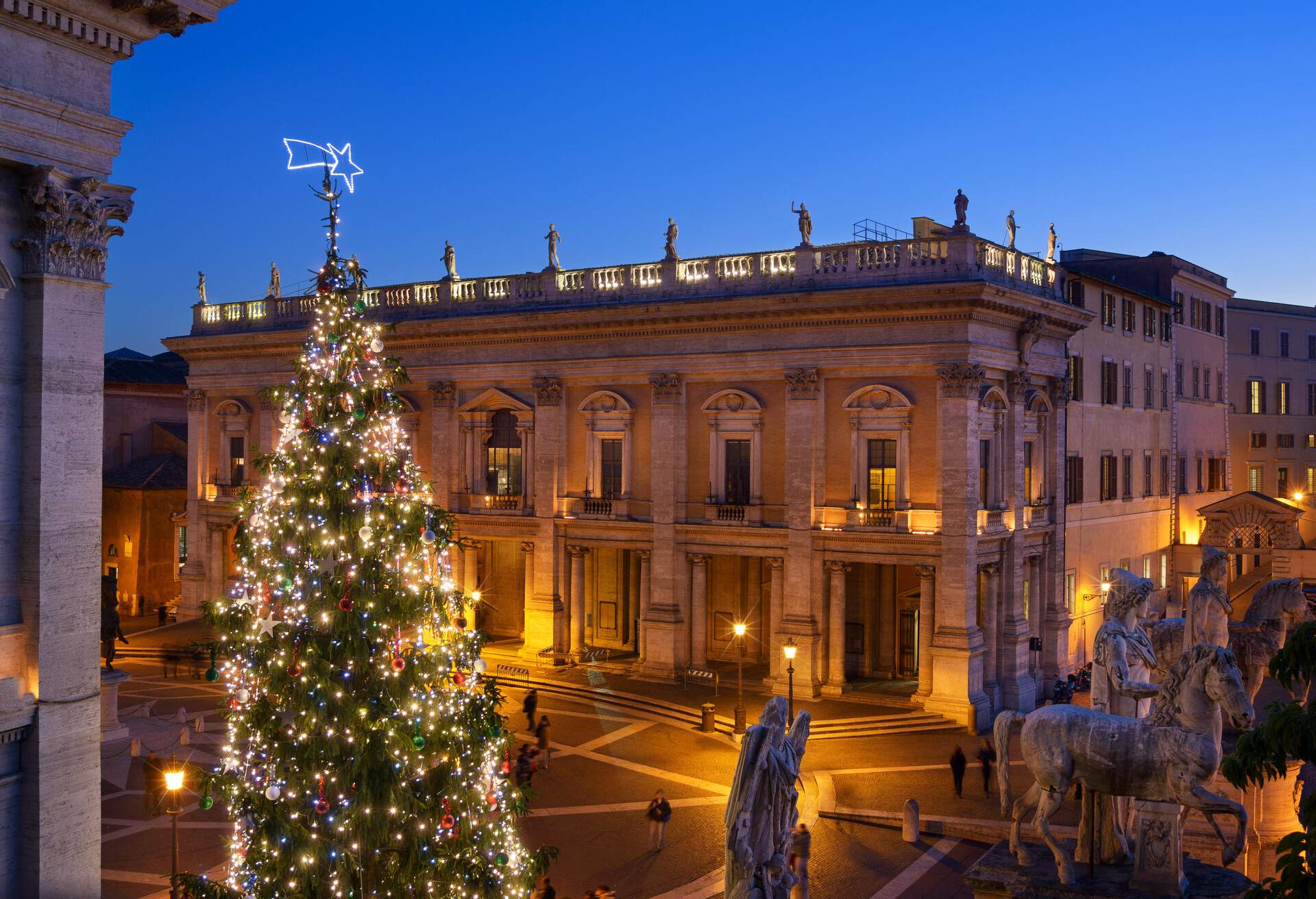
Visiting Rome in the winter months might not seem like an obvious choice, but that might be exactly why you should do it. December to February are usually the least busy months in terms of other tourists, which also means prices are usually cheaper. Although they’re the coldest months of the year, the temperature rarely dips below freezing, with average temperatures of around 7 degrees Celsius (around 45 degrees Fahrenheit). This means even travellers from more temperate climates won’t be in for too much of a shock. Rainy weather is most probable in December; though, it will likely continue to rain throughout winter, while snow is most likely in February.
Getting around Rome in winter
Rome is a very walkable city, with many of its most popular attractions in close proximity to one another, but colder temperatures tend to make the stroll between the Spanish Steps and the Colosseum feel a bit too long. Instead, you might prefer to make use of the city’s excellent public transportation system, which includes buses, trains and trams.
What to do in Rome in winter
Of course, in winter you can visit most of Rome’s most popular attractions, such as the Colosseum and the Roman Forum. Fewer crowds mean less queuing, so you can save time and pack even more into your trip. Major retail sales in Rome only happen twice a year, so another reason you might want to visit Rome in January specifically is to make the most of their winter sales. And, of course, if you’re visiting in December, you’ll want to check out the Christmas Markets. These usually open around the 8th of December and close in late December or early January; here you’ll find locally made goods, fun rides and nativity scenes.
What to pack for Rome in winter
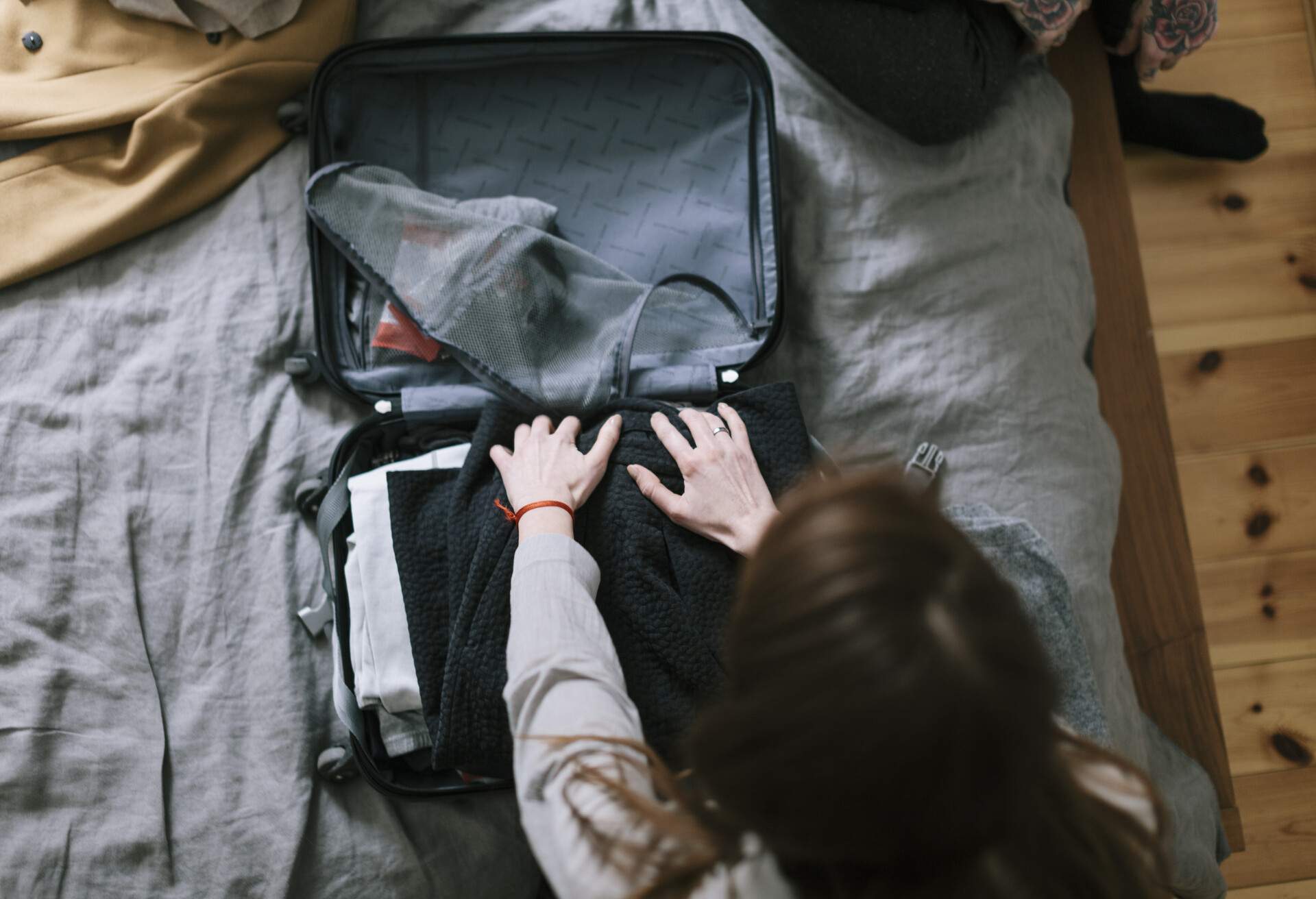
Rain boots and a raincoat are a must when visiting Rome in winter, as rainy weather is quite common. You’ll also want a warm jacket or coat, and thermal underlayers are an easy way to make any outfit warmer. Don’t forget about accessories, like gloves, a scarf or two and at least one warm hat. Snow is uncommon and usually not heavy, but if you have snow boots, they might come in handy if you’re visiting during February.
Visiting Rome in spring
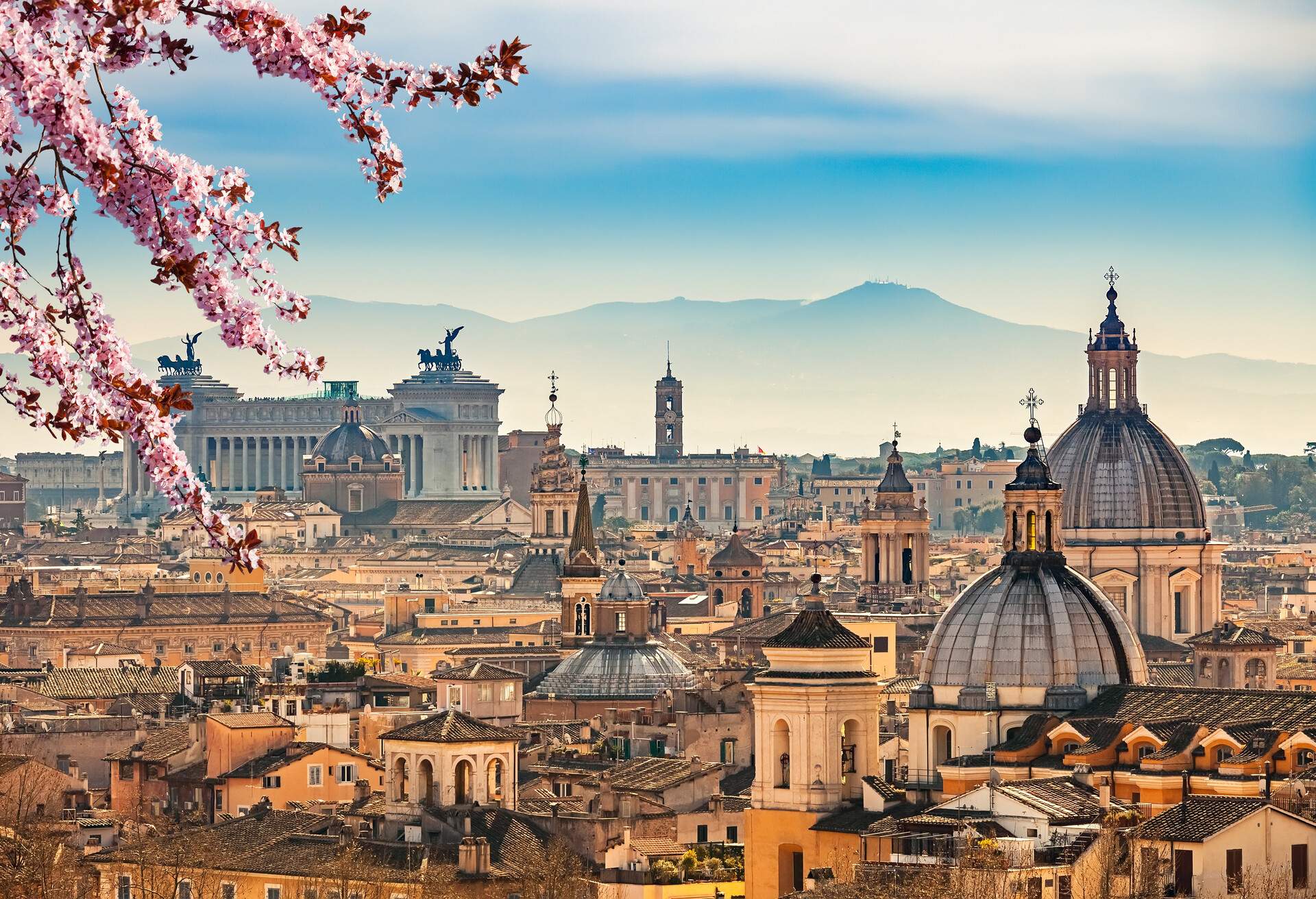
While there’s no one-size-fits-all answer to the best time to visit Rome, the one-size-fits-most answer is probably Spring. Spring is when Rome’s weather is at its most pleasant, with temperatures averaging around 20 degrees Celsius (around 68 degrees Fahrenheit). The city and its buildings come alive with flowers and greenery adorning window sills and street corners. Accommodation prices also tend to be cheaper than in summer, though more expensive than in winter – you’ll find that prices climb the closer to summer you get.
What to do in Rome in spring
Spring is the season of festivals in Rome, including the Natale di Roma, a celebration of the founding of the city, where you’ll see reenactments of events in Roman history and parades. Spring is a wonderful time to explore the city’s outdoor offerings, including parks like Villa Borghese and the Rome Botanical Gardens.
What to pack for Rome in spring

Pack short sleeves and lighter clothes to wear during the day, but also bring a good outer layer to wrap up for evening strolls. March and April can be quite rainy, so a rain jacket and boots will come in handy. If you’re packing dresses for spring, remember that it’s best if they sit below the knee when you’re planning to visit any of Rome’s churches while wearing them. And don’t forget a pair of comfortable walking shoes.
The best time to visit Rome in summer
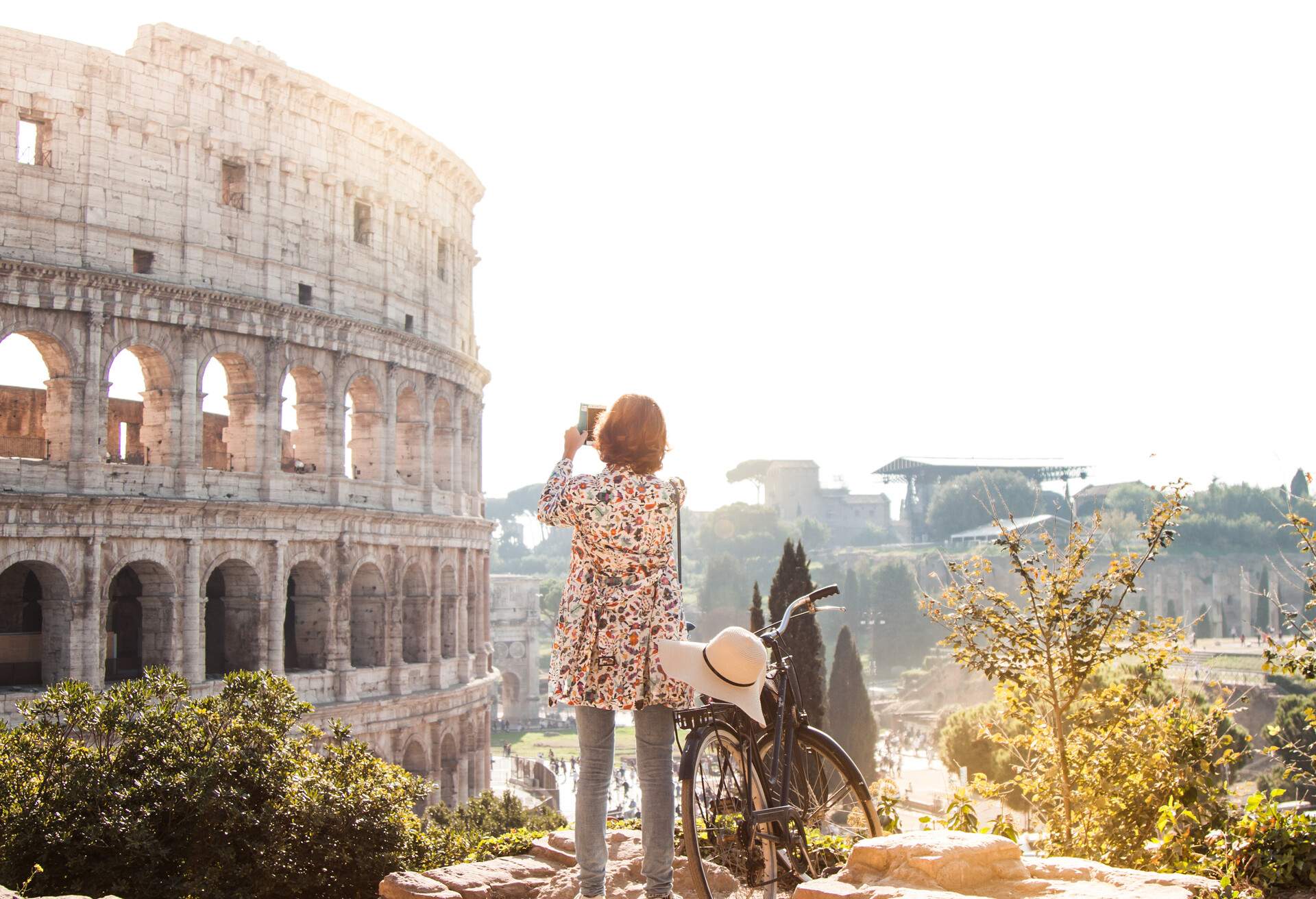
Visiting Rome in summer will mean you get the warmest, sunniest weather and some of its busiest crowds. The average temperature is around 29 degrees Celsius (around 84 degrees Fahrenheit), with the hottest temperatures in the second half of the season. In August, Rome is known for its humid, muggy weather. In fact, for this reason, August is the month you’ll find the least locals in the city; it’s when they usually choose to take their summer holidays. With a little preparation, summer in Rome can be an unforgettable experience for all the right reasons.
Tips for visiting Rome in summer
The number-one tip for experiencing Rome’s most famous sights during summer is to do so in the early morning or in the evening, to avoid the hottest hours of the day. The Colosseum and Castel Sant’Angelo both offer brilliant night tours that are usually less crowded than those during the day. If you like to book guided tours, you’ll often find those that start early in the morning are also cheaper than tours during the day. Additionally, always bring plenty of water with you and remember you can fill your water bottle at one of the city’s small fountains, called ‘nasonis’.
What to do in the middle of the day in summer
So, how do you spend your time when the sun’s at its peak? Well, while taking a tour around the Colosseum or strolling the city’s famous plazas may not be ideal, there’s plenty to do indoors in summer. One obvious (but not to be missed) option is to grab a table at one of the city’s many gelaterias and melt the heat away with the popular icy dessert. Many visitors to Rome put the city’s beautiful churches at the top of their itineraries, and they are often a wonderfully cool respite from the heat outside.
What to pack when visiting Rome in summer

The most crucial item you will need when visiting Rome in summer is sunscreen. You don’t want to spend any part of your trip nursing a nasty sunburn, so pick up some SPF 50+ and remember to reapply it every 2 hours to help keep your skin protected as you roam the city streets. Light, breathable clothes, especially ones that let you cover up and still stay cool, as well as a broad-brimmed hat and sunglasses are also essential.
Excited for your next adventure? Our friends at Where to Go, produced by the team behind the award-winning DK Eyewitness travel guides, are here to help!
Each fortnight, hosts James and Lucy talk to local experts about the destination they have chosen to call their home, exploring their personal connection to the place, what makes it so special and the best things to see and do.
Listen to the podcast below for more inspiration and tips from Rome:
